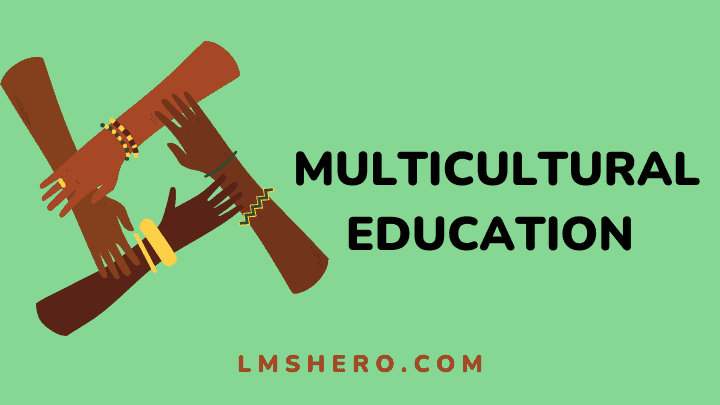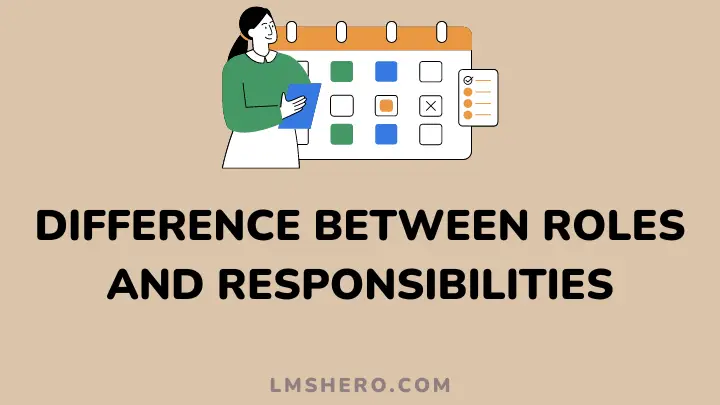Multicultural education is one of the most significant issues facing communities, countries, and states at this time. Why? Mainly because these are times of diversity, as well as times of inequality, segregation, and cultural domination. And culture is important, both positively and negatively.
Multicultural education is simply teaching children about the diversity of cultures and what this means for their perceptions, values, and behaviors.
This article will provide you with a well-rounded view of this topic and what it means in the education system.
What is Multicultural Education?
Multicultural education is the act of implementing practices that represent different ethnicities, cultures, religions, and genders in an educational environment.
Educators use multicultural education to promote tolerance, appreciation for diversity, and respect for others.
It incorporates the acquisition of knowledge, skills, values, and positive attitudes toward diversity in a multicultural society using an inclusive approach.
Multicultural education also aims to prepare graduates who can function adequately as citizens in a diverse society and promote tolerance and understanding.
How Does Multicultural Education Work?
Multicultural education works by drawing from the strengths of a diverse group of people to come up with solutions to problems.
Multicultural education also recognizes that people of different cultures often need to learn different skills because they solve problems differently.
It is a process through which educators intentionally expose students to other cultures through a variety of experiences. This may include artwork, music, and books, as well as encounters with other individuals.
There are two sides to multicultural education. One of them is how multicultural children can become global citizens who will be able to work cooperatively with people of other cultures without being influenced by prejudices.
Another one is about how teachers and students can rethink their own identity when experiencing “being different”.
Why is Multicultural Education Important?
1. Become more, tolerant and accepting of diversity
Multicultural education is an educational process that enhances the social awareness of students with different cultural backgrounds.
It promotes the acceptance of people of all origins and develops positive relationships among students. It also allows students to be more tolerant and accepting of diversity. Therefore, they can become global citizens.
2. Develop an appreciation of and respect for cultural differences
Multicultural education helps to cultivate an appreciation of and respect for cultural differences.
It is both a process and outcome of learning, for learners, educators, and wider community members. It promotes the valuation of multiculturalism and helps to build harmonious intercultural relationships that respect human rights and social justice.
3. Diversity training for teachers
Multicultural education is a concept that aims to make sure all students are treated equally, regardless of their race, ethnicity, religion, or national origin.
The teacher must also understand the values held by their students’ peers, family, and the larger community to help them feel comfortable in the classroom.
4. Multicultural education can help reduce prejudice and discrimination
Multicultural education can help reduce prejudice and discrimination. In such programs, children are exposed to people of all ages, genders, ethnicities, faiths, and cultural backgrounds, which will help them to feel more at ease in society.
Children who are raised in a diverse environment grow into adults who are more accepting of others than those who were not raised in such environments.
These types of lessons help foster positive attitudes, which in turn will keep ethnic and religious discrimination at bay.
5. To ensure equitable educational opportunities for all children in a multicultural world
Multicultural education allows the common-sense assumption that human beings are various to be taken up as a basic principle.
Cultural, ethnic, linguistic, and socioeconomic differences should not be sources of inequity in the classroom but instead used as a positive resource to build community.
The goal is not assimilation but coexistence where every child’s heritage and cultural integrity are valued.
In What Ways Can Schools Integrate Multicultural Education Into Their Curriculum?
Create an inclusive classroom
Relationships with people of different cultures are very important. You can learn about their culture, as well as how to make others feel comfortable around you.
For this reason, you need to make sure that your classroom is inclusive of a variety of cultures.
Aside from this, you must remain open-minded and accessible to any questions or concerns your students may have.
Besides, students will not concentrate on the curriculum if they feel uncomfortable in any aspect of the classroom. Also, it is important to realize that all interpretations of a culture are not the same. Everyone interprets culture differently.
Assign multicultural projects and celebrate diversity
The curriculum of every school has its way of integrating multicultural education into the students’ learning.
Schools can create multicultural projects that challenge the students to investigate a topic and share their findings with their fellow students.
These projects provide a good forum for different cultures to be discussed in the class equally. Students who learn about different cultures in the classroom will be more accepting of others and have higher self-esteem.
Understand students’ learning styles
Educators have long known the importance of teaching in varied ways for all students to understand topics well.
Teachers are now recognizing the need to cater learning to different styles of learning, including visual and auditory, among others.
Each group learns differently and benefits from different types of instructional strategies or teaching methods. When teachers know these styles they can give the right directions to reach their students.
Instill curiosity in the students
Curiosity is a wise approach to learning, and it will help students learn how to learn. Prepare a multicultural education curriculum that will help create a deeper understanding of the different cultures or gatherings.
A learning environment should be conducive to motivation. This is especially important for children in the early years when curiosity is encouraged.
By finding unique ways to motivate students to learn, teachers can ensure that they remain positive about education.
By incorporating events, themes, and materials that celebrate multiculturalism
Schools can celebrate multiculturalism in many different ways; by incorporating multicultural materials and events into their curriculum.
For example, they can celebrate cultural diversity in a variety of subjects, such as history, language study, music lessons, art, and English literature.
By exploring a multitude of topics and genres through the lens of culture and ethnicity, schools can begin to provide a more informed, sensitive, and open-minded education.
When schools celebrate different cultures and their contributions to society, they help create an inclusive environment that values diverse ethnicities.
Through field trips and real-life experiences outside the classroom
Multicultural education aims to understand, appreciate, and respect students of diverse racial and cultural backgrounds.
Through field trips and real-life experiences, teachers have the opportunity to capture students’ interest in learning about other cultures.
For example, if your school hosts an African dance performance, bring your students to the show. Let them ask questions and interact with other people from around the world. You can also use this multicultural education experience as a lesson in your classroom.
Getting your students involved in real-life experiences outside of the classroom is one of the best ways to teach multicultural education. If you have the opportunity to take your students on field trips, be sure to bring your camera.
There’s nothing quite like bringing back pictures for the classroom that show your kids what it’s like to be a part of a diverse community.
Ensure information is accurate and unbiased
Schools can ensure that all of their students’ and teachers’ learning styles and needs are being met by implementing multicultural education classes, lessons, and activities across all subject areas. Another step schools should take is to ensure that multicultural education information is as accurate as possible.
Teach students to think critically and embrace alternative views
When educators want to teach multicultural education topics, they can begin by developing a multicultural orientation and sense of identity within their students.
To do this, they need to foster the willingness to discuss controversial topics and issues like immigration, racism, and socio-economic inequality. They also need to teach their students to think critically about different viewpoints.
What Are the Common Materials Used to Teach Multicultural Education?
Multicultural education will be enabled in various ways. Each teacher’s experience is different, as well as the time they will take to go over multicultural issues with their students. However, the following are some materials that may help to teach multicultural education:
- The Internet
- Books and magazines
- Television, films, and videos
- Online courses
- Classroom discussions and lectures
- Field trips and activities outside the classroom
- Hands-on activities
Multicultural education is not a special program for the few, but a method of teaching that can be used in all classrooms every day. It is an essential part of education for all students to help them understand and appreciate the world in which they live.
However, it is a great challenge to teach multicultural education, but with the right techniques and materials, the rewards are very high.
Currently, there are not many materials and techniques that address multicultural education in depth. I do hope that in time, more materials and techniques will be developed to address this growing need.
Multicultural Education: What Does it Accomplish?
Multicultural education helps to develop students socially, emotionally, and intellectually.
Besides, it seeks to prepare students for a culturally diverse future by providing them with an appreciation of their own culture. It also aids the understanding of other cultures, an appreciation of their similarities and differences, and respect for the views of others. The major goals are to;
- Prepare future teachers for diverse classroom contexts
- Foster mutual respect among students of different ethnic groups
- Encourage students to appreciate the value of their heritage
- Help students enter adulthood with sufficient preparation for work and citizenship in a global community
Multicultural education is empowering for students of different backgrounds and values- it provides equality for all. Thus, the result of multicultural education is better-educated students with more well-rounded personal identities.
FAQs
Which is more important, diversity or unity?
This is a common argument between diversity and unity.
Diversity allows for the appreciation of differences and promotes unity when there is understanding. Unity makes for respect between others where you come together as one.
In my view, both are important and contribute to society in their own way. Diversity makes things interesting, while unity keeps things intelligible and organized.
Why should people become familiar with other cultures in the first place?
By becoming familiar with other cultures, people will have a deeper understanding of the varieties of different human beings.
In this time and age, the number and diversity of human beings are rapidly increasing. Therefore, it is important to more deeply understand others to lead a happy and peaceful life.
Who will benefit from multicultural education?
In my opinion, three aspects will benefit from this kind of education. They are;
- Students: Multicultural education will allow students to explore other cultures and broaden their perspectives about the world.
- Teachers: Multicultural education will provide teachers with a tool to use in the classroom.
- Policies: Policies that promote multicultural education can focus on increasing awareness of all people, including race and sexual orientation.
Multicultural education is appropriate for everyone, from school children to adults. Its primary benefit is that it adds a greater appreciation for other cultures to the participant’s worldview, thereby becoming a more considerate member of society.
To achieve this, people need to get out of their comfort zones and learn about other cultures.
Final Thoughts
My advice and recommendation are that teachers should include multicultural education and activities in their curriculum. There are many benefits that multicultural education can provide for learners. First, multicultural awareness leads to cultural capital.
Furthermore, it broadens young minds and enables them to understand others’ ideas, values, and experiences.
In addition, it prepares students to live in a pluralistic society. And finally, it encourages students to think globally, which will help them become more knowledgeable and responsible citizens.
The presence of multicultural education will benefit many areas of an institution, especially those related to cultural sensitivity and the instigation of acceptance in classrooms.
Finally, I want to remind parents that multicultural education does not stop in schools.
Parents have a role to play in a child’s education. Learn more by reading the article on why parietal involvement is important in a child’s education.
Thanks for reading.







